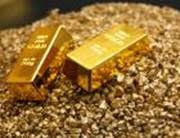January Payrolls And Gold

The US economy added 227,000 jobs in January. What does it mean for the gold price ?
Job Gains Accelerate
As we wrote on Friday, the recent ADP employment report signaled that government data could also surprise positively. Indeed, total nonfarm payroll employment jumped 227,000, following 157,000 in December, according to the U.S. Bureau of Labor Statistics. Analysts had expected 175,000 jobs created. Thus, the actual number was significantly above expectations. However, employment gains in November and December combined were 39,000 lower than previously reported. Anyway, job gains in the last three months have averaged 183,000, significantly higher than last month. Job gains were concentrated in retail trade (+46,000), professional and business services (+39,000) and construction (+36,000). Transportation and utilities reduced jobs slightly.
Job gains were strong in January, signaling further improvement in the U.S. labor market. Indeed, the chart below shows that there was a reversal in the annual pace of employment growth.
Chart 1: Total nonfarm payrolls (percent change from year ago) over the last five years.
Surely, one month does not tell us much. However, it seems so far that the U.S. labor market has strengthened further, which should be welcomed by the Fed.
Other Labor Market Indicators
Other labor market indicators were rather positive. The unemployment rate edged up from 4.7 percent to 4.8 percent. Both the labor force participation rate and the employment-population rates rose 0.2 percentage point to, 62.9 and 59.9 percent, respectively. The average wage in the private sector increased 3 cents to $26.00, after rising 6 cents in December. It means that the hourly pay jumped 2.5 percent over the year. Hence, the Fed hawks should enjoy the report. However, the wage pressure softened compared with December, which, by the way, was revised downward.
Payrolls, Fed And Gold
The U.S. labor market continues to create jobs, while the rise in hourly earnings reflects the upward wage pressure, which should be welcomed by the Fed, keeping it on a gradual rate hiking path. The unemployment rate edged up, but it was accompanied by the improvement in the labor force participation rate and the employment-population rate. This reflects new entrants into the labor market. All of this (rising payrolls, new entrants, and stable wages) is a negative development for the yellow metal, at least theoretically.
In reality, the price of gold rose initially in the aftermath of the publication. Thus, it seems that traders focused on the soft wage increases. Perhaps, investors expected much stronger wage pressure, which would be a strong harbinger of the upcoming Fed hikes. Instead, markets still expect two interest rates upward moves this year. Actually, the market odds of a March hike declined from 18 to 9 percent. Moreover, with a stronger ADP jobs report issued Wednesday, the Friday’s number was not a big surprise. These factors may explain gold’s resilience in response to the positive Employment Situation report.
The bottom line is that January employment gains were strong and signaled that the U.S. labor market started the year on a reasonably solid footing. However, the slowdown in the annual wage growth casts some doubts about the pace of the Fed’s tightening cycle. If markets do not believe in quick monetary normalizing and, additionally, worry about Trump’s action, we could see the repeat of last year, when gold prices rose in January and February after the December hike. In contrast, if we hear hawkish comments from the FOMC members, while Trump eases its aggressive stance, the prices of gold may decline. However, investors should take all analogies with a pinch of salt, since a lot changed over the year. Stay tuned!
Disclaimer: Please note that the aim of the above analysis is to discuss the likely long-term impact of the featured phenomenon on the price of gold and this analysis does not indicate (nor does it aim to do so) whether gold is likely to move higher or lower in the short- or medium term. In order to determine the latter, many additional factors need to be considered (i.e. sentiment, chart patterns, cycles, indicators, ratios, self-similar patterns and more) and we are taking them into account (and discussing the short- and medium-term outlook) in our trading alerts.



















